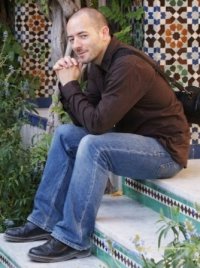The Bendowa is the first section of the Shobogenzo and is an introduction and summary of the rest of the work. The title can be translated as 'A Talk about Pursuing the Truth'. The first part of Bendowa is called Jijiyuzammai (self-joyous meditation).
Text
The various Buddhas and Tathagatas have a most enlightened way of realizing superior wisdom and transmitting the supreme law. When transmitted from Buddha to Buddha, its mark is self-joyous meditation. To enter this meditation naturally, right sitting is the true gate. Though each man has Buddha-nature in abundance, he cannot make it appear without practice or live it without enlightenment. If you let it go, it fills your hand; it transcends the one and many. If you talk about it, it fills your mouth; it is beyond measurement by height and width. All Buddhas eternally have their abode here without becoming attached to one-sided recognition. All beings are working here without attachment to sides in each recognition. The devices and training that I teach now manifest all things in original enlightenment and express unity in action. And when you thoroughly understand, why cling to such trifles as these?
Interpretation
The true understanding of Buddhism has been spread from one buddha to another by a method of meditation characterised by joy which is not dependent on external conditions. Sitting in the correct way is neccessary.
Though each man has Buddha-nature in abundance, he cannot make it appear without practice or live it without enlightenment.
Everyone has Buddha-nature, but Buddhist practice is required to make it appear.
If you let it go, it fills your hand
Even when we do not pursue it or try to understand it, it is intimate to existence.
it transcends the one and many
It is limited to neither oneness nor multiplicity.
This non-dualism of the ordinary and enlightened perspectives (or relative and absolute or samsara and nirvana) comes up again and again in the Shobogenzo and other Mahayana Buddhist texts, for example in the Heart Sutra, the expression 'Form is emptiness, emptiness is form'. Even though this understanding emerged out of the Pali Canon, sometimes earlier forms of Buddhism taught in a dualistic manner with a clear distinction between Buddhas and ordinary beings, pure and impure, practice and attainment etc - treating each of these as if it had independent existence. This is dharma from the perspective of samsara. Mahayana Buddhism attempts to indicate something beyond this.
it is beyond measurement by height and width.
It is the reality that lies beyond definition and measurement - beyond conceptual and linguistic convention.
All Buddhas eternally have their abode here without becoming attached to one-sided recognition.
One-sided recognition is understanding of reality only in terms of either conventional (relative)description or only in terms of absolute reality ('oneness' or 'emptiness'), both of these are incomplete, dualistic understanding. True understanding of Buddhism includes both of these and allows freedom to move between these two perspectives and beyond all dualities.
And when you thoroughly understand, why cling to such trifles as these?
Dogen is teaching the means to enlightenment but when enlightenment is attained, we will have such a perspective that his teachings will seem too trivial to be attached to. When liberation is attained we can go beyond even Buddhism itself.

4 comments:
Justin, thanks for starting this blog! I've been looking for a way to compare notes with others on the Shobogenzo, and now it's here. I just discovered it yesterday so i haven't caught up with you yet, but i have a question already:
Since you begin with Bendowa i figure you are working with the 95-fascicle version; but which translation(s) are you using? This could make a difference to those of us who don't read Japanese. Also comparing translations can sometimes be illuminating. (I've read 6 translations of Bendowa, so far, including the one published with Uchiyama Roshi's commentary as The Wholehearted Way.)
More questions to come, no doubt, after i catch up with your commentary ... by the way i have a Dogen reading list at http://users.xplornet.com/~gnox/meanlist.htm#Dogen .
Hi Gnox,
Nice to hear from you again. I'm looking forward to an exchange of ideas.
My intention is to understand Dogen and to use Nishijima as the main translation and, when preferable, whatever translations are available and clear - comparing them when required. In fact, I've just realised that I don't know for sure who the translator of this version of the Bendowa is but I think it is Reiho Masunaga. I found it online here
Folks have a look at
http://www.dogensangha.org.uk/downloads.htm
Sorry here is the direct link to the modern interpretation...
http://www.dogensangha.org.uk/Talks/1-%20Bendowa%20Interpretation.pdf
Post a Comment